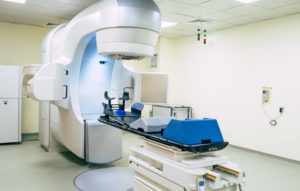Lung Cancer Prognosis
Prognosis is a term used to describe the outcome of a disease. While the average lung cancer prognosis is often poor (with many people only living a few years or months), it may be possible to be fully cured or live for decades after a diagnosis. Learn what you can do to improve your lung cancer prognosis below.
What Is the Prognosis for Lung Cancer?
Since lung cancer is often very aggressive and there’s no known cure, it often has a poor prognosis.
On average, those with lung cancer live for anywhere from a few months to two years following their diagnosis. Less than 20% of lung cancer patients are still alive 5 years after being diagnosed. Further, lung cancer has the highest number of cancer deaths, killing hundreds of thousands of people each year.

However, these survival statistics don’t tell the full story. A wide range of factors — including available health care options and what type of lung cancer you have — can all affect your prognosis.
In fact, many lung cancer patients who were initially given a very poor prognosis have gone on to become long-term survivors. You’ll have a better shot of improving your lung cancer prognosis if you seek medical treatment — especially if metastasis (cancer spread) hasn’t occurred yet.
Medical care to improve your lung cancer prognosis can be expensive. Thankfully, you might qualify for financial aid. Find out your eligibility right now with a free case review.
- Access Financial Aid and Justice
- Learn About Your Options
- Contact Us for Free

Getting a Lung Cancer Prognosis
A prognosis is given after a diagnosis of lung cancer has been confirmed. Your doctors will tell you your prognosis and recommend a course of treatment based on it.
Getting a lung cancer prognosis can be scary, and you may have a lot of questions or worries about the future. The American Lung Association (ALA) and many medical professionals recommend taking life one day at a time after getting your prognosis.
A lung cancer prognosis is simply what doctors think will happen in your case — it’s not definite. Remember, many other lung cancer patients were cured or became long-term survivors despite getting a poor prognosis at first.
Measuring Lung Cancer Prognosis
A lung cancer prognosis is measured using life expectancy (the average span of time someone lives after getting diagnosed) and survival rate (the percentage of people still alive after a set period of time). These lung cancer statistics are key to understanding your prognosis. Learn about each below.
Lung Cancer Life Expectancy
Life expectancy is the average amount of time someone lives after a diagnosis. Lung cancer patients typically live for two years or less following a diagnosis.
That said, there are plenty of other patients that have lived for 10, 15, or even 20 years with lung cancer.
Lung Cancer Survival Rates
Survival rates account for the number of people that are still alive after a certain amount of time has passed. It’s typically expressed in years.
The American Lung Association (ALA) notes that the average 5-year survival rate for lung cancer is 18.6%. However, the survival rate can be higher or lower depending on when you’re diagnosed, your general health, and many other factors.
Non-Small Cell Lung Cancer Prognosis
What type of lung cancer you have can greatly impact your prognosis, as some types are easier to treat than others. Non-small cell lung cancer (NSCLC) is the most common type of lung cancer and has a better prognosis when compared to small cell lung cancer (SCLC).
Patients with NSCLC typically live for 11-13 months, according to a 2020 medical report. Further, the American Cancer Society (ACS) found that the overall 5-year survival rate for NSCLC was 26%.
Small Cell Lung Cancer Prognosis
Small cell lung cancer has a worse long-term prognosis than NSCLC. The average life expectancy for this type is just 7 months, according to a 30-year study of SCLC patients in the Surveillance, Epidemiology, and End Results (SEER) registry. The 5-year survival rate for SCLC is 7%, as noted by the ACS.
Small cell lung cancer is more aggressive and has fewer available treatment options than NSCLC, which explains why these patients have a particularly poor prognosis. That said, it’s still possible to become a lung cancer survivor even if you have SCLC.
Prognosis of Bronchial Carcinoids
Bronchial carcinoids are the third and least common type of lung cancer, accounting for only 1-2% of cases. Bronchial carcinoids have the best lung cancer prognosis even though they’re quite rare.
Patients with bronchial carcinoids live for 5 and a half years on average if the tumors are removed with surgery, according to a 2021 study. The 5-year survival rate for bronchial carcinoid patients is 92.4%, and many patients can even live for 10-15 years.
Learn if you can access financial aid for treatments to improve your lung cancer prognosis. Call (877) 446-5767 now.
Factors that Affect Lung Cancer Prognosis
Many different factors can influence a lung cancer prognosis for better or for worse. The unique factors in your case could make the difference between living for decades or for a few months.
View notable prognostic factors for lung cancer below.
Lung Cancer Prognosis by Age
Generally speaking, older patients have a poorer lung cancer prognosis and a higher mortality (death) rate.
In North America, lung cancer mortality peaks between the ages of 80 and 84, according to an August 2022 study. 300 out of every 100,000 in this age group died as a result of lung cancer. By comparison, there were less than 10 deaths per every 100,000 people in those under 44 years of age.
Lung Cancer Stage
The stages of lung cancer greatly affect prognosis. Those diagnosed with early-stage lung cancer generally have a better prognosis, as the cancer hasn’t spread very far into other parts of the body and is easier to treat as a result.
Patients with late-stage or advanced lung cancer have fewer treatment options available and a lower chance of achieving long-term survival.
Doctors often use the TNM (tumor-node-metastasis) staging system to classify cases of lung cancer into stages. There are four stages of NSCLC and two stages of SCLC.
- NSCLC patients have an average life expectancy of 33-55 months if the cancer is caught in the early stages. Their life expectancy drops to 4-28 months if the cancer is diagnosed in the later stages.
- SCLC has a life expectancy of 14-20 months when diagnosed in the limited stage (which is the first stage for this type). Patients live for 8-13 months on average when they have extensive-stage SCLC.
However, it may be possible to become a long-term survivor and live for decades even if you’ve been diagnosed with late-stage lung cancer. You’ll need to undergo aggressive treatments in order to improve your lung cancer prognosis and work toward a longer lifespan.
Doctors can determine what stage your cancer is in using computed tomography (CT) scans, X-rays, and other imaging scans. From there, they’ll be able to recommend treatments based on the stage that may help you live longer.
Patient Health
A patient’s overall health can impact their lung cancer prognosis and what treatments they qualify for.
A big factor that plays a role in a lung cancer patient’s health (and prognosis) is smoking. More smokers than nonsmokers get lung cancer, and those who are still smoking at the time of diagnosis are highly encouraged to quit before starting treatment.
“The healthier you are before treatment, the easier it will be to recover. If you smoke, the time to quit is now.”
— American Lung Association (ALA)
Johns Hopkins Medicine also notes that certain lung cancer therapies are more effective when patients eat healthfully, exercise, and don’t smoke.
Lung Cancer Prognosis and Treatments
Getting treatment is the most effective way to improve your lung cancer prognosis. Lung cancer treatments allow doctors to destroy cancer tumors and cells — hopefully for good.
“Every doctor, patient and caregiver [hopes] that treatment will get rid of the cancer completely. This is a more realistic goal for some lung cancer patients than for others.”
— American Lung Association
You may qualify for several lung cancer treatment options depending on your prognosis and diagnosis. All of the following treatments can improve your lung cancer prognosis.
Surgery


When treated with thoracic (chest) surgery, patients with stage 1 NSCLC have a 5-year survival rate of 80% and stage 2 NSCLC patients have a 5-year survival rate of 68%.
Bronchial carcinoid patients that underwent surgery had a 5-year survival rate of 92% and a 15-year survival rate of 76%, according to the U.S. National Library of Medicine.
Chemotherapy
Chemotherapy (medication used to destroy cancer cells) is commonly used if a patient cannot receive surgery.
Late-stage NSCLC patients treated with chemotherapy live for 8-10 months on average, according to a 2022 study.
Chemotherapy is particularly effective in destroying SCLC. However, this cancer is prone to recurrence (coming back) even with treatment, which is part of the reason these patients have a poorer prognosis.
Chemotherapy can also be combined with other treatments — notably surgery — to improve a patient’s prognosis.
Learn how you can afford chemotherapy and other treatments to live longer with lung cancer. Get a free case review.
- Access Financial Aid and Justice
- Learn About Your Options
- Contact Us for Free



Immunotherapy
Immunotherapy (medication that enhances the body’s immune response) has been shown to improve lung cancer prognosis in many cases.
In 2018, the National Cancer Institute (NCI) noted that a combination of immunotherapy and chemotherapy increased survival by two months in patients with advanced SCLC. This was very important as it was the first new treatment combination in over 20 years that had helped these patients live longer.
Immunotherapy also helps patients with late-stage NSCLC. A study from the journal Future Oncology found that late-stage NSCLC patients lived for 17.5 months on average when treated with immunotherapy.
Radiation Therapy
Radiation therapy (where doctors use beams of energy to shrink tumors) may be recommended when surgery isn’t an option.


Radiation therapy can also be used alongside other treatments to help patients live longer. For example, patients with advanced SCLC received radiation after first getting treated with chemotherapy and immunotherapy in a 2022 study. These patients lived for 16 months on average.
Palliative Care
Palliative treatments focus on easing a patient’s symptoms. While they may not directly help patients live longer, they can improve quality of life, which may, in turn, help the patient recover.
Palliative care options for lung cancer include less-intense forms of the treatments listed above, as well as oxygen and nutritional supplements, medications to lessen pain, or even emotional counseling.
Clinical Trials
Some patients may qualify to join a clinical trial (where new treatments are tested to hopefully improve lung cancer prognosis).


Your cancer care team will monitor how your body responds to any and all treatments it receives. If a certain treatment isn’t effective in destroying your cancer — or causes severe side effects — another may be tried to help improve your lung cancer prognosis.
Lung Cancer Prognosis Without Treatment
Your lung cancer prognosis will likely be very poor if you don’t get any treatments. The medical journal Systematic Reviews revealed that NSCLC patients lived for a little more than 7 months on average if they didn’t get treated.
Even delaying treatment can worsen a lung cancer prognosis. A 2021 study found that stage 1 NSCLC patients who didn’t get surgery within 12 weeks of a diagnosis didn’t live as long and were more prone to cancer recurrence.
Improving Your Lung Cancer Prognosis
After getting a lung cancer prognosis, you and your family may feel devastated, shocked, or scared. All of these feelings are natural, and it’s important that you know there is hope. Your lung cancer prognosis may improve with time and treatment.
Here are some tips for improving your lung cancer prognosis:
- Get lung cancer screenings: Early detection is key to having a better lung cancer prognosis. If you (or a loved one that you lived with) smoked, consider getting regular screenings that can catch lung cancer before it causes symptoms.
- Get support: It’s important to have a network of people you can rely on as you fight lung cancer. Doctors, family, counselors, and even legal professionals can take some of the load off your shoulders.
- Get treatment: Medical treatment can help you improve your lung cancer prognosis and become a survivor. Other patients have lived for decades with lung cancer or were fully cured thanks to treatments — including patients who were originally given just months to live.
Our team can help you and your family pursue compensation so you can pay for treatment and improve your lung cancer prognosis. Get a free case review now.
FAQs About Lung Cancer Prognosis
Which type of lung cancer has the worst prognosis?
Small cell lung cancer has the worst prognosis when compared to the other types of lung cancer. SCLC patients live for 7 months on average while NSCLC patients live for 11-13 months and those with bronchial carcinoids often live for over 5 years.
That said, it’s still possible to live for decades with SCLC. For example, Montessa Lee was 28 years old when she was diagnosed with SCLC in 2006, but thankfully she is still alive today — over 15 years later.
What is the prognosis for stage 4 lung cancer?
Stage 4 non-small cell lung cancer has the worst prognosis of all stages. Only 7% of patients with stage 4 NSCLC will be alive 5 years after diagnosis. Those with extensive-stage SCLC (which is the equivalent of stage 4) have it even worse: Just 3% are alive 5 years later.
Long-term survivorship is possible, though. A 2021 study from Frontiers in Oncology noted that 25-30% of stage 4 NSCLC patients live less than 3 months after a diagnosis. However, patients that do not pass away after those 3 months can sometimes live for 10 or 15 years.
Does lung cancer have the same prognosis as mesothelioma?
No. Mesothelioma (an asbestos-caused cancer that develops in the linings of major organs, usually the lungs) is sometimes confused with lung cancer. In reality, mesothelioma is an entirely different cancer with its own unique prognosis.
Mesothelioma patients typically live for 12-21 months on average, depending on where the cancer forms, when it’s diagnosed, and how it responds to treatments. The overall survival rate for mesothelioma is only 10%, which is nearly half the survival rate for lung cancer.
Can a lung cancer prognosis change?
Yes. Depending on how your body responds to medical treatment, you could have a longer or shorter lifespan than originally expected.
Some lung cancer patients have gone on to become lung cancer survivors despite a very poor prognosis at first. Your cancer care team will let you know of any changes to your prognosis following treatment.

